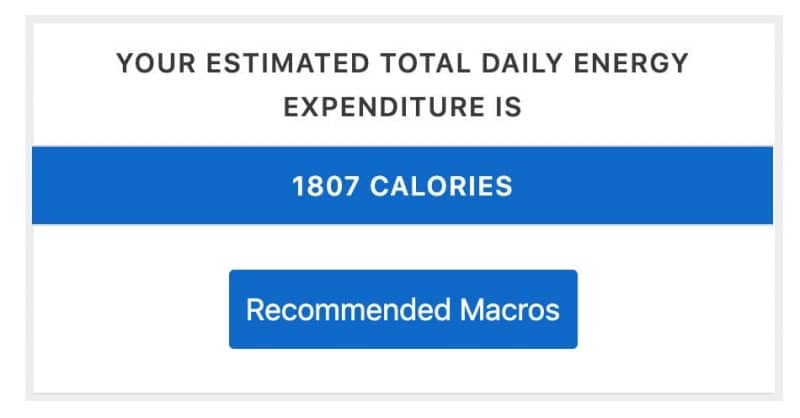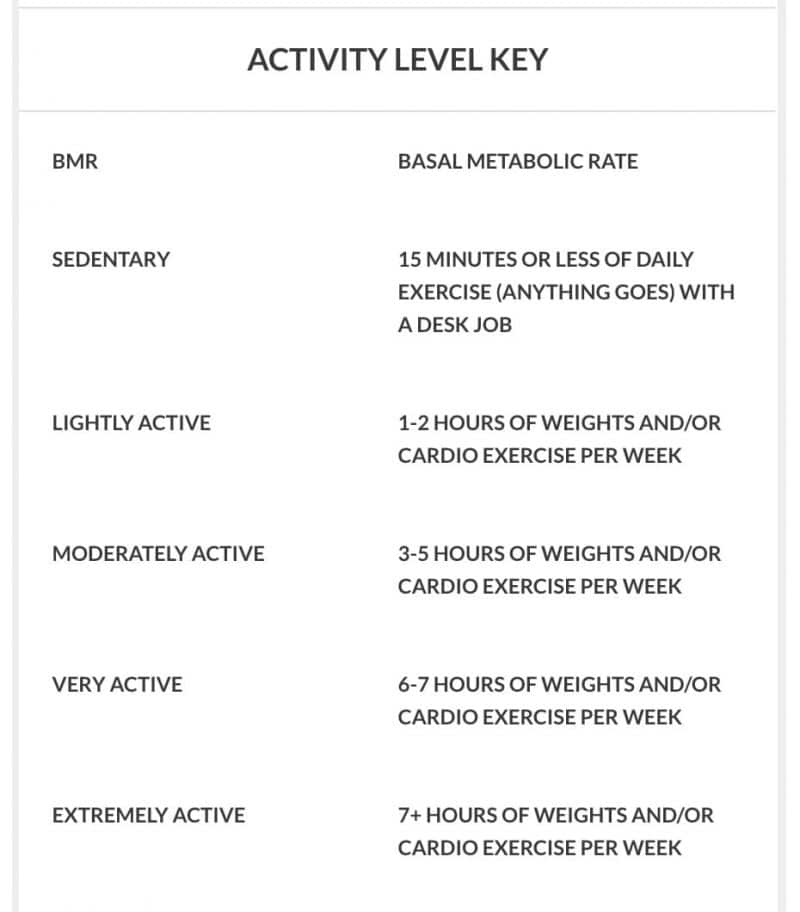You body burns energy all day long, even when you sleep, but we classify how it burns energy in a few different ways.
Those are:
- BMR (basal metabolic rate)
- TDEE (total daily energy expenditure)
- NEAT (non-exercise activity thermogenesis)
- TEF (thermic effect of food)
Before we get into those specifically, first you must understand a little more about what energy expenditure is. The human body creates energy from the food we consume through heat. Since our bodies run hot, it breaks down the food we’ve eaten into units of energy we label as calories (or kilocalories).
The human metabolism (as well as most other mammals) runs hot, meaning that energy is constantly lost over time… so we need to have an influx of calories (energy) to run and function optimally.
This is why we have to constantly eat to keep our energy levels up. We aren’t reptiles that can eat once or twice per month.
Now, let’s get into the nitty gritty of what makes up your energy expenditure.
Basal Metabolic Rate (BMR)
Your BMR is what you burn at rest. It’s what you’d burn every day, no matter what to keep your body functioning and alive.
Think of it like this… if you were to stay in bed all day doing nothing, your body would still require a certain amount of energy needed for function.
We tend to equate our activities such as training, cardio, walking around as what burns calories.
And while those activities do burn calories, our bodies are also burning calories just to stay alive. All of your organs require energy from food to function normally.
Your brain requires glucose for processing power. Your stomach requires calories to digest food, which it turns into useable energy for later. Your heart requires energy to keep beating. Your skin and bones require energy to repair themselves from everyday cell turnover (cell replication).
Thermic Effect of Food (TEF)
Since your organs require energy to function, it uses energy to digest the food you’ve consumed. In short, this is referred to as the thermic effect of food. Each macronutrient will require a certain amount of energy to digest. Here are some quick figures to illustrate how much energy is required to digest each macronutrient:
- Carbohydrates: 5 to 15% (study) // 5-15 calories to digest 100 calories of carbs
- Protein: 20 to 35% (study) 20-35 calories to digest 100 calories of protein
- Fats: at most 5 to 15% (study) 5-15 calories to digest 100 calories of fat
In layman’s terms, this simply means that there’s a percentage of calories you consume going toward digestion, rather than your physical exercise.
Many people will claim that you should eat more protein because it has the higher TEF, but you shouldn’t actually pay much attention to this for two reasons:
- It’s not worth worrying about because you have to eat food to function and worrying about the percentage of calories it takes to digest your food will not make positively affect your results.
- You don’t need to eat more than 1 gram per pound of bodyweight in protein, and eating more is not going to make your fat loss or weight maintenance process easier.
For ease of explanation, I input some numbers into my maintenance calorie calculator to help illustrate how this works.
As you can see below, you have the inputs for height, weight, and activity level (I chose BMR for the sake of the question above).

On the next page, here’s the calculation for the BMR.
When you scroll down, you’ll see a recommendation for the total caloric intake for your Basal Metabolic Rate (BMR).

From here, you know that for a male at 190 pounds, he’ll be burning roughly 1800 calories per day just to survive. Our bodies are warm and as a result, they require a good amount of energy just to function on a daily basis.
Let’s next look at the activity on top of your BMR.
Total Daily Energy Expenditure (TDEE)
TDEE is your BMR plus all the other energy expended outside of what it takes to keep your body functioning. This includes moving around for daily tasks (getting out of bed, brushing your teeth, walking around your house, making food, going to work, training at the gym, playing frisbee in the park, etc).
So, if you have a relatively good idea of how active you are, you would use the key below to determine what you choose as your activity level in the calculator.

All of that extra activity requires calories for energy. As a result, your total energy requirements go up. Let’s say that you’re training 3-4 days per week with weights. As you’ll see by the example below, your daily requirements for calories (TDEE) goes up a good amount in relation to your BMR.
TDEE is also sometimes referred to as your maintenance intake, which is exactly what it sounds like: what it takes in terms of calorie intake to maintain your body weight, all activities included.
A common concern of many (myself included) is whether or not these activity calculators are 100% correct for every individual.
Here’s a hint: they’re not.
Your expenditure may not be in line exactly with the total amount of calories suggested to maintain your body weight from a calculator.
Instead of taking these calculators as a defining measure of how much you need to consume on a daily basis, it’s better to see them as a starting point from which you can adjust over time based on your real-world results.
If you eat according to the maintenance caloric level suggestions and you lose weight, you’ll need to eat more. If you gain weight on the calculator’s recommendations, you’ll need to eat less.
So what gives in terms of the accuracy or inaccuracy of these calculators for everyone?
There are 2 variables:
- Tracking your nutrition accurately
- NEAT (Non-Exercise Activity Thermogenesis)
I’ve already covered how to track macros in the past. Give that article a read if you want to know all about that.
Non-Exercise Activity Thermogenesis (NEAT)
NEAT is energy expended for everything we do that is not sleeping, eating or sports-like exercise. NEAT can differ widely from person to person.
You might have 2 people who are seemingly identical in their daily habits, exercise intensity, muscular build, and eating habits but have differing levels of energy requirements.
Outside of some slight metabolic differences, the amount of food they need to maintain their weight will often be affected by their NEAT. Some people are generally more fidgety than others.
Some tap their foot during work, while others hardly move at all.
Some find it incredibly hard to sit still, and others can be perfectly fine vegging out on the couch all day. NEAT can have a drastic impact on your energy expenditure when it doesn’t outright negatively affect your daily routine.
For instance, the person who walks to work, or spends time getting up at regular intervals from their desk to stretch and move around are going to burn more calories from these activities than someone who drives to work and is chained to their desk.
This is why those with active jobs (people on their feet all day, working delivery routes, doing manual labor) can seem to be bottomless pits when it comes to their food intake.
Why You Need To Understand Energy Balance And Maintenance
Regardless of your goal, you have to understand the amount of food required to maintain your body weight.
To Maintain simply means to constantly replace the energy you’ve expended with more energy from food. It’s a cyclical process and you’ve been doing it your entire life, likely without ever thinking about the concept of maintenance calories before.
I’ve illustrated how this works in a chart below:
Understanding your expenditure over a 24-hour period:

As you’ll see, if you expend 3,000 calories for energy over a 24-hour period (daily activity included), and you consume 3,000 calories, then you’ll not gain or lose weight.*
You’ll maintain your body weight with no fat and/or muscle gain or loss.
*Note: your weight can (and likely will) fluctuate over time within 1-5 pounds (or more depending on various factors like glycogen storage, water retention, bowel movements, urination, sodium intake, etc), so you’re hardly ever going to see the same exact weight on the scale every day. Also, realize that energy balance is always in fluctuation due to how varied human nutrient intake can be (read the ‘energy balance’ summary at the end).

4 thoughts on “Energy Expenditure: How Many Calories Are You Really Burning?”
Comments are closed.